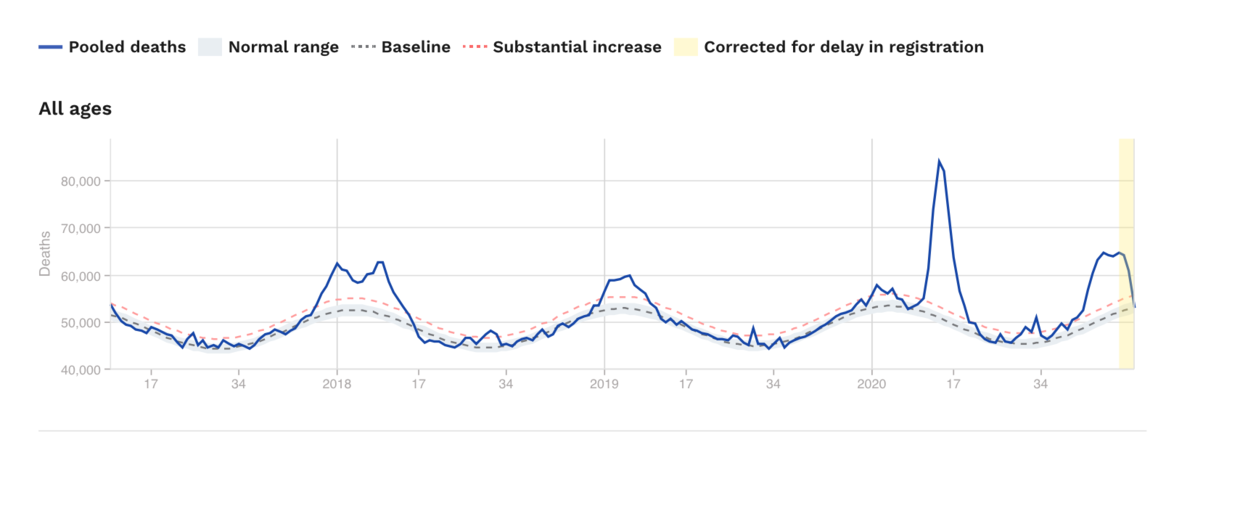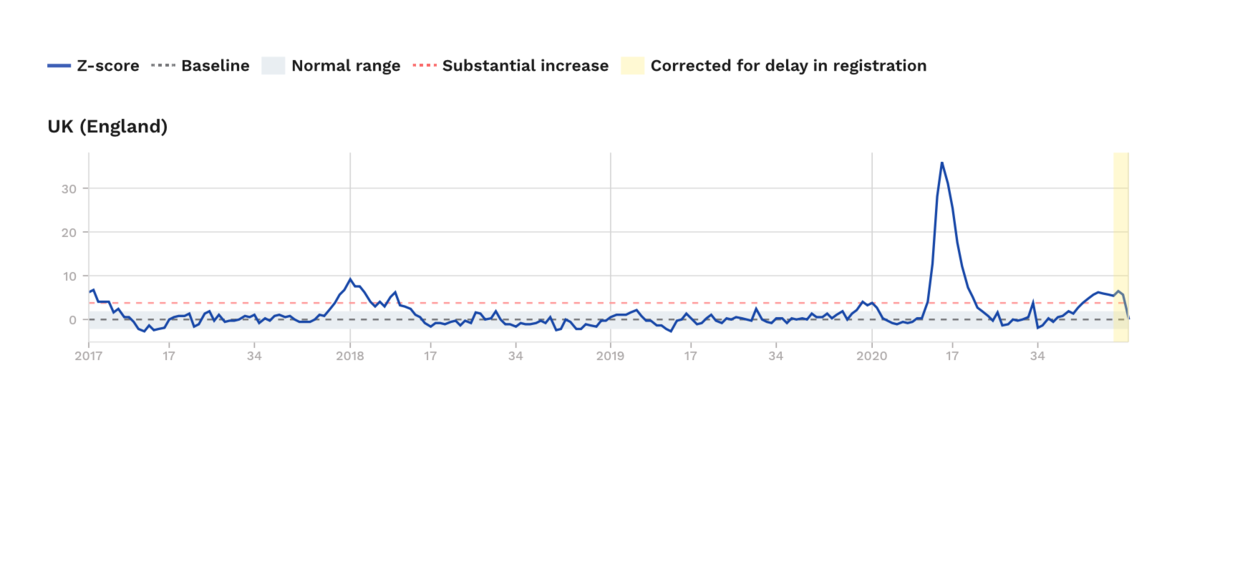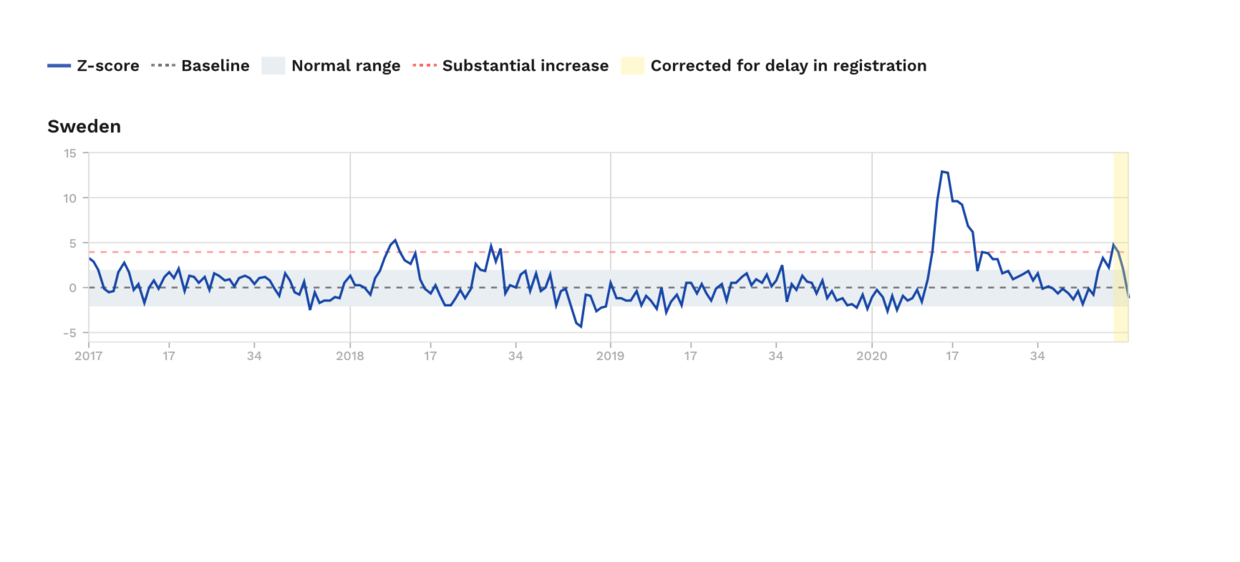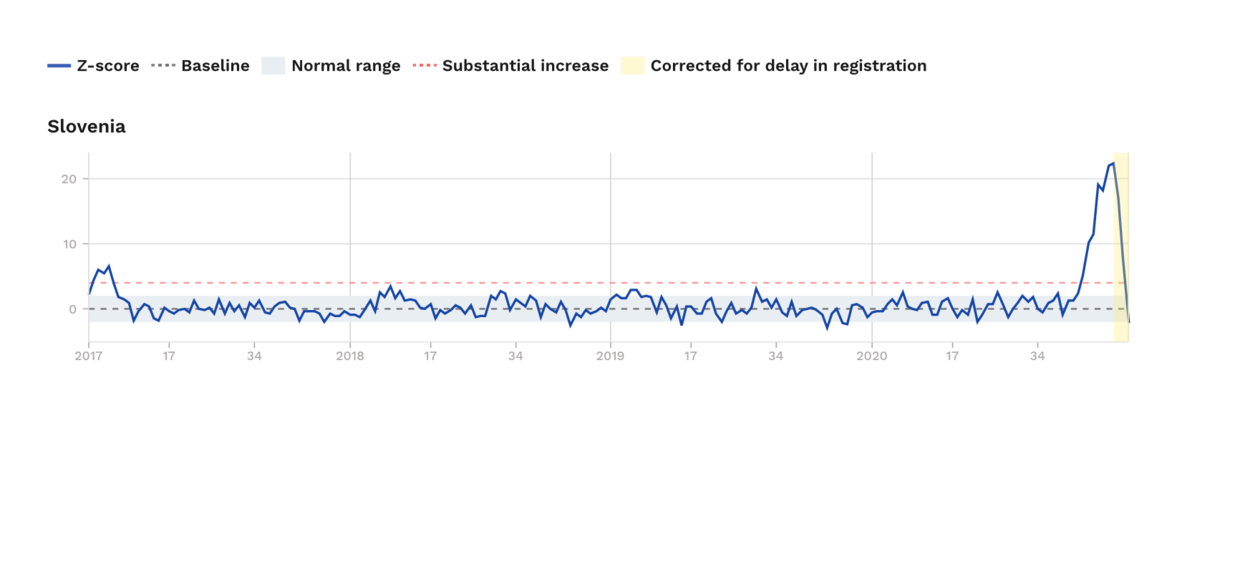As a doctor, I’ve studied the data swirling around this perplexing Covid virus. One stark truth stands out: lockdowns don’t work

One year since it began, there are still more questions than answers about Covid-19. Just about the only reliable data on it are the mortality rates for various countries. In a murky world, they give us clarity.
I’ve not written much about Covid-19 recently. What can be said? In my opinion, the world has simply gone bonkers. The best description can be found in Dante’s Inferno, written back in the 14th century.
In it, Dante describes the outcasts, who took no side in the rebellion of angels. They live in the vestibule. Not in heaven, not in hell, forever unclassified. Naked and futile, they race around through a hellish mist in eternal pursuit of an elusive, wavering banner, symbolic of their pursuit of ever-shifting self-interest.
I find this description of the desperate pursuit of an elusive wavering banner an apt description of where we are today. Which banner are you following?
The one that says, ‘Covid-19’s the most terrible infection ever, and we must do everything in our power to stop it, whatever the cost’?
Or the other that states: ‘What on Earth are we doing? This is no worse than a bad flu, and we are destroying the world economy, stripping away human rights and killing more people than we are saving’?
There may be others.
Also on rt.com As a doctor, people ask me if it’s safe to take a new Covid vaccine. Given that criticism is risky, here’s my very careful answerBetween these two completely incompatible positions lies the truth. It’s in poor shape. It’s been crushed, bent out of shape, and left as a broken heap in the corner. I search where I can to find the fragments in an attempt to bring together a picture that makes some kind of sense.
But what to believe? Who to believe?
I have stripped away at the accuracy of PCR Covid-19 testing. I found myself left with nothing I could make any sense of. I hacked down to establish the way that Covid-19 deaths are recorded. All I found were assumptions and difficulties.
Did someone die with Covid-19, of Covid-19 – or did it have nothing to do with the virus? Who knows? I certainly don’t, and I’ve written some of the death certificates myself.
Have we overestimated deaths, or underestimated deaths? I do not know… and so it goes on.
So, what do I know?
Is Covid deadlier than influenza? Well, it is certainly deadlier than most strains of influenza. However, Spanish flu was estimated to have killed 50 million, when the world’s population was about a fifth of what it is now. So it is definitely less deadly than that. About as deadly as the influenzas of 1957 and 1967, probably.
Will it mutate into something worse? Who knows. Will the current vaccines work on mutated strains? Who knows. Can it be transmitted by asymptomatic carriers? Who knows. How effective are the current vaccines going to be? Who knows.
What are we left with?
Also on rt.com Fewer than 400 healthy people under 60 have died of Covid in England, so it’s not wrong to question our response to the pandemicWhat I have been waiting to see is the virus’ impact on the one outcome that you cannot alter, or fudge. The outcome that is overall mortality i.e. one’s chances of dying, of anything.
I have waited for this because, when it comes to recording deaths from a specific illness, things can go in and out of fashion. A couple of years ago, I looked at deaths from sepsis, an infection that gets into the blood, releasing deadly toxins. At one time, this was a low priority condition. Doctors didn’t routinely search for it, or record it, on death certificates.
Then, all of a sudden, there was a gigantic push to look for it more diligently, and treat it better. This was generally a good thing, as sepsis is eminently treatable and lives can be saved. We now have initiatives, and warnings that pop up on computers. ‘Have you considered sepsis?’ and suchlike. I love it… not. Because I do not love being told how to think, and do my job, by a computer algorithm programmed with ‘zero risk’ as their touchstone. But, hey ho.
In 2013, a UK report from the health ombudsman urged action, stating: “Sepsis is a more common reason for hospital admission than heart attack – and has a higher mortality.” That is somewhat disingenuous, as many people with sepsis are very elderly, often with multiple morbidities. They were probably going to die, shortly, from something else.
With all this increased sepsis recognition and treatment, you would expect the rate of deaths from sepsis to fall. It did not. The rate has gone up by around 30 percent since 2013. Does this mean there is far more sepsis going about? Or that it is just more often written on death certificates? I suggest the latter. I use this example simply to make it clear that even the cause of death written on a death certificate is far from solid evidence.
With Covid-19, this is a massive problem. In the UK, and several other countries, if you have had a positive Covid test (which may, or may not, be accurate) and you die within 28 days of that test, you will be recorded as a Covid-19 death. I may not know much for sure about Covid-19, but I do know this is complete nonsense.
Also on rt.com Meet ‘Dr’ Tony Blair, warmonger turned vaccination guru and health passport promoterSomeone with terminal cancer catches Covid-19 in hospital and dies. What killed them?
There are so many cases where – even if the test was accurate – Covid-19 would have had nothing to do with the death. Another that we probably know is that the vast majority of people who die with the virus had many other things wrong with them.
The US Center of Disease Control (CDC) found that 94 percent of people who had Covid-19 ‘related deaths’ had other significant diseases, or comorbidities. This 94 percent would only be the comorbidities that were known about – who knows what lurked beneath? Especially as we’ve stopped doing post-mortems (or autopsies in the US).
So yes, the patient had Covid-19 (or at least they had a positive test – which may not be the same thing), but they were often very old and severely ill. Using an extreme example, someone with terminal cancer who is a week from death, catches Covid-19 in hospital, and dies. What killed them? The statistics say Covid-19. I say, rubbish.
When I started in medicine, ‘bronchopneumonia’ (a bad chest infection) used to be known as the ‘old man’s friend.’ For those who were very old, and frail, often demented, lying in care homes, often incontinent, a chest infection represented a reasonably painless way to die.
Very often we would not actively treat it; instead we allowed for a peaceful death. Indeed, this still happens. Less so now, as someone, somewhere, often a relative living a long way away – who has not visited for years – is more likely to sue you.
Also on rt.com If the ‘Great Reset’ really is so good for us, let’s hold a referendum on it, so it can have a democratic mandate (or not)Did they really die of bronchopneumonia? You could argue yes, you could argue no. Yes, it was the thing that finally pushed them over the edge. No, they were already slowly dying as their body gave out. In the end, what does anyone actually die of? My Scottish granny, who lived to 102, used to say ‘they die frae want of breath.’ Entirely accurate, but, alas, also completely useless.
So, what you need to do is look beyond what is written on death certificates. You need to look at what is happening to the overall mortality. While you can argue endlessly, pointlessly, about specific causes of death, what you cannot argue about is whether or not someone is alive, or dead. Even I usually get this one right. No pulse, no breathing, no reaction of the pupils to light, no response to pain… and suchlike. Yup, dead. Now… what did they die of? Um… let me think.
Thus, I have tended to look to EuroMOMO. The European Mortality Monitoring project that detects and measures excess number of deaths related to viruses across many countries in Europe.
Here’s the data that you can therefore, pretty much, fully rely on. It is where I go to see what is really happening across Europe. It encompasses key countries such as Spain, Italy, the UK (split into four separate countries), Sweden and suchlike.
Here is the graph of overall mortality for all ages, in all countries. The graph starts at the beginning of 2017 and carries on to almost the end of 2020.

As you can see, in each winter there is an increase in deaths. In 2020, nothing much happened at the start of the year, then we had – what must have been – the Covid-19 spike. The tall pointy bit around week 15.
It started in late March and was pretty much finished by mid-May. Now, we are in winter, and the usual winter spike appears. It seems to be around the same size as winter 2017/18. It also seems to have passed the peak and is now falling. But it could jump up again. [The figures in the most recent weeks can always be a bit inaccurate, as it can take some time for all the data to arrive]
Two things stand out. First, the obvious ‘Covid-19 spike’. Second, what we are seeing at present does not differ greatly from previous years. The normal winter spike in deaths.
If we split this down into individual countries, this reasonably clear pattern falls apart.
Here are the figures from England

Unlike the first graph, the scale on the left is not absolute numbers. It is a thing called the Z-score, which means standard deviation from the mean. Sorry, maths. If the Z-score goes above five (the red, dotted line), this means something significant is happening. As you can see, despite the howls of anguish from England about Covid-19 overwhelming the country, we are really not seeing much at all.
What of Sweden, that pariah country? They did not fully lock down, the irresponsible fools (all they did was follow WHO guidance, by the way), and we are now told they are suffering terribly, they should have enforced far more rigid lockdown, their ‘experiment’ failed etc., etc.

As you can see, nothing much is happening in Sweden either.
Then, if you look further, there are anomalies all over the place. Northern Ireland, which is part of the UK, and did exactly the same things as the rest of the UK with regard to lockdown, masks etc. At least it did in the earlier part of the year. However, it shows a completely different pattern to England. Or, to be fully accurate, it shows no pattern at all. No waves, and nobody drowning.

Strangely, this graph, which I downloaded a few days ago, seems to no longer be available at the EuroMOMO site.
What of Slovenia?

As you can see, absolutely nothing happened earlier in the year in Slovenia. Now, it has the biggest spike of all – apart from, maybe, Switzerland. Earlier in the year, it was held up as a great example of how brilliantly effective masks were. Now… you don’t hear so much about masks.
So, what have I learned from the EuroMOMO data? First, that it appears to have made absolutely no difference if a country locked down hard and early, or did not. Everyone points at Norway and Finland as examples of great and early government action, and how wonderful everything would have been if we had done the same.
Well, look up again at Northern Ireland. Then look at Finland:

Spot the difference. There is none.
Of course, much of the most heated debate surrounded what happened during the so-called first wave. Who dealt with it well, or badly. Now, everyone in Europe is doing much the same things. Lockdowns, restrictions on travel and on meeting other people, everyone wearing masks, etc. Yet some countries are having a new wave, and others are not.
There is a special prize for anyone who can match up the severity of restrictions in various countries, to the Z-score. I say this, because no correlation exists.
So, again, what have I learned about Covid-19? I have learned that all governments are floundering about, all claiming to have exerted some sort of control over this disease and ignoring all evidence to the contrary. In truth, they have achieved nothing. As restrictions and lockdowns have become more severe, in many cases the number of infections has simply risen and risen, completely unaffected by anything that has been done.
The official solution is, of course, more restrictions, as the British prime minister suggested again yesterday. Essentially, ‘We just haven’t restricted people enough!’ Sigh. When something doesn’t work, the answer is not to keep doing it with even greater fervour. The real answer is to stop doing it and try something else.
I would recommend that we stop testing – unless someone is admitted to hospital and is seriously ill. Mass testing is simply causing mass panic and achieves absolutely nothing. At great cost. We should also just get on with our lives as before. We should just vaccinate those at greatest risk of dying, the elderly and vulnerable, and put this rather embarrassing episode of mad banner-waving behind us.
Hopefully, in time, we will learn something. Which is that we should not, ever, run about panicking, following the madly waved banners… ever again. However, I suspect that we will. This pandemic is going to be a model for all mass panicking stupidity in the future. Because to do otherwise would be to admit that we made a pig’s ear of it this time. There are far too many powerful reputations at stake to allow that.
Like this story? Share it with a friend!
The statements, views and opinions expressed in this column are solely those of the author and do not necessarily represent those of RT.














